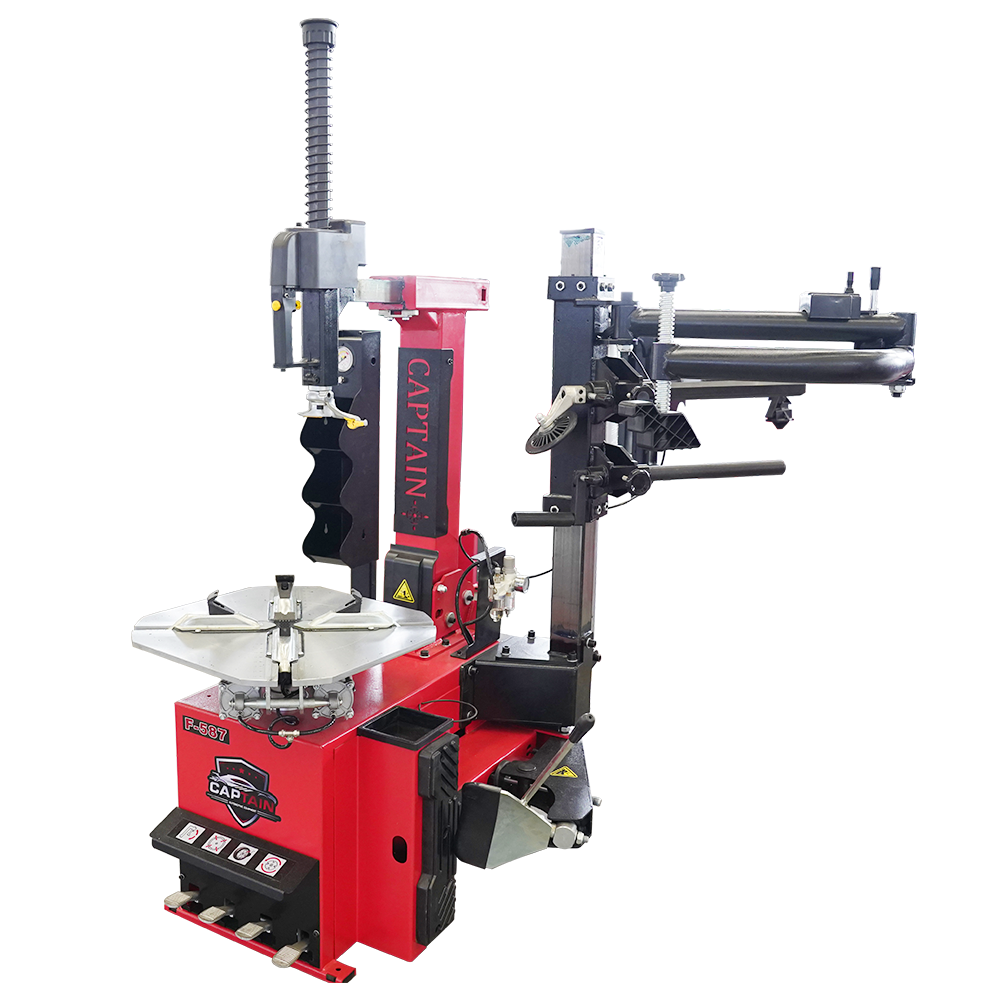Understanding the Mechanics of Manual Tire Changing Equipment
A manual tire changer represents one of the most fundamental yet essential pieces of automotive maintenance equipment. This mechanical device enables technicians and DIY enthusiasts to remove tires from wheels and mount new ones without relying on expensive powered equipment. While modern automated machines dominate professional shops, manual tire changers remain relevant for their simplicity, reliability, and cost-effectiveness.
The basic principle behind a manual tire changer involves leveraging mechanical advantage through carefully designed components that work together to break the tire bead and facilitate removal and installation. Understanding how these devices function not only helps in proper operation but also ensures safe and effective tire service.

Core Components and Their Functions
The Mount/Demount Bar Assembly
The mount/demount bar serves as the primary tool for tire manipulation. This curved metal bar features specially designed ends that slip between the tire and rim, providing the necessary leverage to lift the tire bead over the wheel's edge. The bar's shape is precisely engineered to minimize the risk of damage to both tire and wheel while maximizing mechanical advantage during the process.
Quality manual tire changers incorporate hardened steel bars with ergonomic grips, allowing operators to apply significant force safely and comfortably. The bar's working end typically includes a protective coating or material to prevent marring of alloy wheels.
The Bead Breaker Mechanism
Perhaps the most crucial component of any manual tire changer is the bead breaker. This mechanism consists of a powerful lever-activated arm that applies concentrated force to separate the tire's bead from the wheel's rim. The bead breaker must generate sufficient force to overcome the tight seal between tire and rim without causing damage to either component.
Modern manual tire changers often feature adjustable bead breaker positions to accommodate different tire sizes and styles. The mechanism usually incorporates a rubber pad or protective surface where it contacts the tire, preventing damage while maintaining effective force transmission.
The Step-by-Step Operation Process
Initial Setup and Positioning
Proper setup begins with securing the wheel onto the manual tire changer's mounting post. This usually involves centering the wheel and using appropriate adapters or clamps to prevent movement during the changing process. The wheel must be firmly fixed but not over-tightened, as this could lead to damage or difficult operation.
Most manual tire changers feature adjustable mounting posts to accommodate various wheel sizes, from small passenger vehicles to light trucks. Correct positioning is crucial for both safety and efficiency during the tire changing process.
Breaking the Bead and Tire Removal
The bead breaking process requires careful attention to technique. The operator positions the bead breaker against the tire's sidewall, close to the rim edge, and applies steady pressure through the lever mechanism. This action must be repeated at multiple points around the tire's circumference to fully separate both beads from the rim.
Once the bead is broken, the mount/demount bar comes into play. The operator carefully inserts the tool between the tire and rim, using the center post as a fulcrum to lift the tire's edge over the rim. This process requires steady hands and proper technique to avoid damaging the tire or wheel.
Maintenance and Care Requirements
Regular Inspection Points
Maintaining a manual tire changer ensures reliable operation and extends its service life. Key inspection points include the mounting post's condition, bead breaker mechanism alignment, and the integrity of all moving parts. Regular lubrication of pivot points and sliding surfaces prevents wear and ensures smooth operation.
Operators should check for signs of wear on contact surfaces, particularly the bead breaker pad and any protective coatings. Worn components should be replaced promptly to prevent damage to tires or wheels during operation.
Preventive Maintenance Schedule
A consistent maintenance schedule helps prevent unexpected breakdowns and ensures safe operation. This includes weekly checks of all fasteners and moving parts, monthly lubrication of mechanical components, and quarterly thorough inspections of structural elements.
Professional users should maintain detailed maintenance logs and perform regular calibration checks to ensure the equipment continues to function within specifications. This proactive approach minimizes downtime and extends the tool's useful life.
Safety Considerations and Best Practices
Personal Protective Equipment
Operating a manual tire changer requires appropriate safety gear, including work gloves, safety glasses, and steel-toed boots. The physical nature of the work and potential for sudden movement makes proper protection essential. Users should also wear appropriate clothing that won't catch on moving parts.
Having a proper working space with adequate lighting and stable footing is equally important. The area around the manual tire changer should be kept clear of obstacles and provide enough room for comfortable operation.
Proper Technique and Common Mistakes
Success with a manual tire changer depends heavily on proper technique. Common mistakes include using excessive force, improper tool positioning, and rushing through the process. Operators should focus on smooth, controlled movements and maintain awareness of their body positioning throughout the procedure.
Training and practice are essential for developing proper technique. Even experienced operators should regularly review proper procedures and stay updated on new tire types and recommended handling methods.
Frequently Asked Questions
What types of tires can be changed with a manual tire changer?
Manual tire changers can handle most passenger vehicle and light truck tires. However, they may not be suitable for large commercial truck tires or specialized applications like run-flat tires, which often require more sophisticated equipment.
How long does it take to change a tire using a manual tire changer?
With proper technique and experience, a complete tire change typically takes 15-20 minutes per wheel. However, this can vary depending on the tire type, wheel size, and operator experience level.
Is special training required to operate a manual tire changer?
While formal training isn't always mandatory, proper instruction in technique and safety is highly recommended. Many equipment suppliers offer training resources, and hands-on practice under supervision is valuable for developing proper skills.

